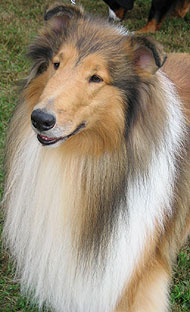Taggat Lagoon

A marina for local fishermen, Taggat Lagoon is a favorite beach swimming destination. The water is generally calm considering the lagoon has a natural breakwater of rocks shielding it from the direct waves of the open sea.
Bring your own food. Open cottages put up by the local village association are for rent plus a minimum entrance fee to the park - the fee is just enough for the upkeep of the place, especially its T&B facilities.
Try the man-made swimming pools at the farther west end of the lagoon. The thick lush forest up in the mountain supplies water to Taggat Falls that is dammed at these pool basins.
Buy fresh sea catch from the local fishermen.
Try the man-made swimming pools at the farther west end of the lagoon. The thick lush forest up in the mountain supplies water to Taggat Falls that is dammed at these pool basins.
Buy fresh sea catch from the local fishermen.
Centinela Beach

The most precious hidden gem of Claveria in my humble opinion.
This should not be missed in any trip to Cagayan. The waters are clear and calm, not too salty as this is near the point where the river meets the ocean. There is a rocky formation not too far from the beach which can be reached by wading when the tide is not too high.
This should not be missed in any trip to Cagayan. The waters are clear and calm, not too salty as this is near the point where the river meets the ocean. There is a rocky formation not too far from the beach which can be reached by wading when the tide is not too high.
Claveria Beach
Four kilometers of clean beach...what else can you ask for? You can spend your day here from dusk till dawn.
During summer, fishermen gather here from 5:00am to 9:00am for their daily catch of galunggong, dilis, atbp. The whole catch is divided into 4. One portion goes to the fishnet owner, the other portion to the uzis and the remaining two portions will be divided among the group.
During summer, fishermen gather here from 5:00am to 9:00am for their daily catch of galunggong, dilis, atbp. The whole catch is divided into 4. One portion goes to the fishnet owner, the other portion to the uzis and the remaining two portions will be divided among the group.
A favorite weekend hideaway for Cagayanos and Isabelanons come summer time, this 4-km long stretch of fine sandy beach is the main attraction of the town. The numerous beach resorts that dot the Beach Boulevard has a total accomodation capacity of about 500+. Whatever your budget, you will find your place. Camping out by the beach during peak season is common when rooms run short.
The Claveria Bay is a very abundant fishing ground. Fresh catch is readily available to the resorts' guests by buying the catch as fishermen out from the sea docks at early morning or at the end of the day. Let the resorts restaurants do the cooking for a minimal fee.
The Claveria Bay is a very abundant fishing ground. Fresh catch is readily available to the resorts' guests by buying the catch as fishermen out from the sea docks at early morning or at the end of the day. Let the resorts restaurants do the cooking for a minimal fee.
Portabaga Falls

Have a great time dipping on the cold waters flowing from mountain springs. There are 5 pools at the base of the falls. The 2 original natural basins have the biggest areas and are about 15-ft deep, recommended for adults. The other 3 man-made pools are tiled and are 2-, 3- and 4-feet deep, safe for children. There are about 6 private open cottages on the sides of the pools good for a maximum of ten persons per. The covered main hall has picnic tables that can accomodate up to 50 persons.
Day-tour only. P5.00 entrance per head. Bring your cooked/packed foods. Barbecue grills are available. A small store sells cold drinks and refreshment foods. Yes, they sell ice cold beer.
Day-tour only. P5.00 entrance per head. Bring your cooked/packed foods. Barbecue grills are available. A small store sells cold drinks and refreshment foods. Yes, they sell ice cold beer.
Macatel Falls

It's good they let this place stay in its unspoiled natural conditon. Only nipa cottages on the banks for day-tour visitors. A well-placed big flat rock on the left side is a favorite diving platform for those who dare to dive 8m high down to the 6m deep basin formed at the base of the falls. The basin is wide enough to do some backstroke/freestyle swimming from end to end.
At the top of the falls is a small basin 2m deep. The flowing water into this small basin sculptured a natural slide on the rock. Great fun sliding and get submerged in the bubbling water. Many shallow natural bathtubs around can be a safe and fun place for the kids.
During the rainy season, be extra careful, the rocks are slippery.
At the top of the falls is a small basin 2m deep. The flowing water into this small basin sculptured a natural slide on the rock. Great fun sliding and get submerged in the bubbling water. Many shallow natural bathtubs around can be a safe and fun place for the kids.
During the rainy season, be extra careful, the rocks are slippery.



